
eXtensions - Saturday 10 June 2023
By Graham K. Rogers

The keynote presentation for WWDC, which ran this week, ended with One More Thing: the long-expected headset with an unexpectedly high price. It is worth looking at the updates to the various OS versions which add to the overall integration experience: be useful for the spaces users will work with in Vision Pro..
I start here with the good reminder this week, from Luke Dormehl (Cult of Mac) of when Apple transitioned from PowerPC to Intel. On 6 June 2005, without the audience realizing, Steve Jobs had run the whole of the morning's presentation on an Intel-equipped iMac, which he also demonstrated to the audience. Apple tends to make things ready before announcing a new device or technology (see below).
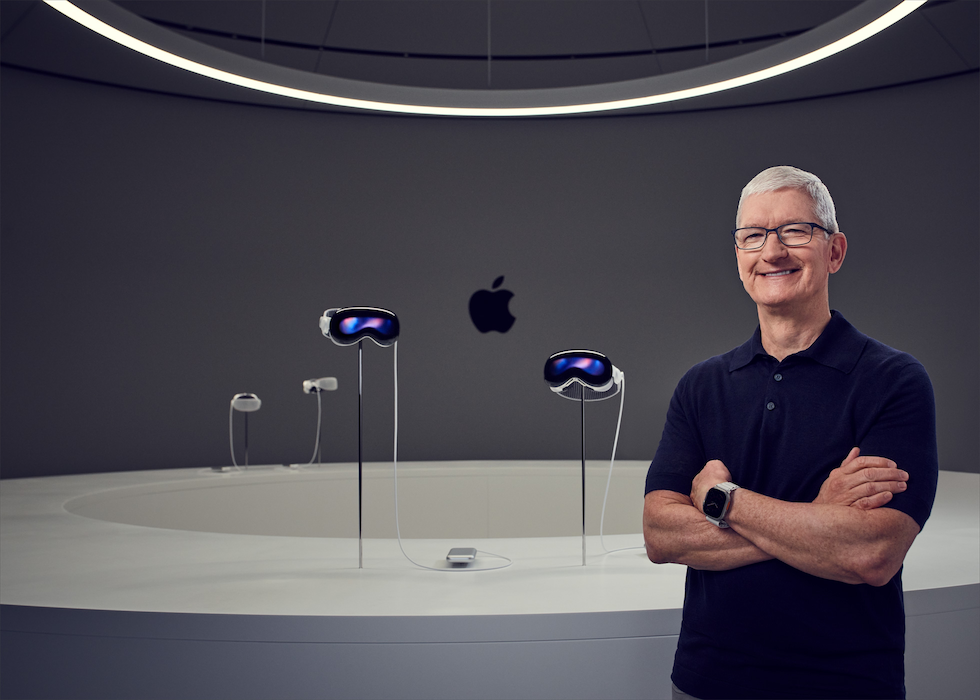
Yes, we have had headsets for years. I was disappointed in the Microsoft headset I looked at, admittedly back in 2016 which showed just how much needed to be done. The information already available about Vision Pro shows that, like other concepts (music player, phone, tablet), Apple has taken an idea and run far ahead of the others. Apple hasn't just moved the goal posts, it has moved to a different area.
MacDaily news had some useful links to the comments from others. A couple were negative, but most were not simply positive, but jump-up-and-down enthusiastic. Tony Fadell, for example, who is referred to as the "Father of the iPod" says that Apple has jumped the shark (MacDaily News). In addition, in another posting, MacDaily News reports that the developer of the Oculus Rift headset, Palmer Luckey, calls Vision Pro, "The One". Predictably in an all-hands meeting, Mark Zuckerberg dismisses the Apple device as "not the one that I want" (MacDaily News).
While a couple of articles in Wired were positive, one from Kate Knibbs, who had not tried the device, was savaged by the MacDaily News contributor. I had already looked at the original and did not understand why, as well as the negativity about Vision Pro, she was bad-mouthing the iPad, which has seen a fair amount of success. David Pogue who has had a long relationship with Apple and OS X (macOS) likened it to the iPhone paradigm shift, but moreso:"I spent half an hour trying the Apple Vision Pro headset. Here's the punch line: This is one freaking mind-blowing piece of tech."
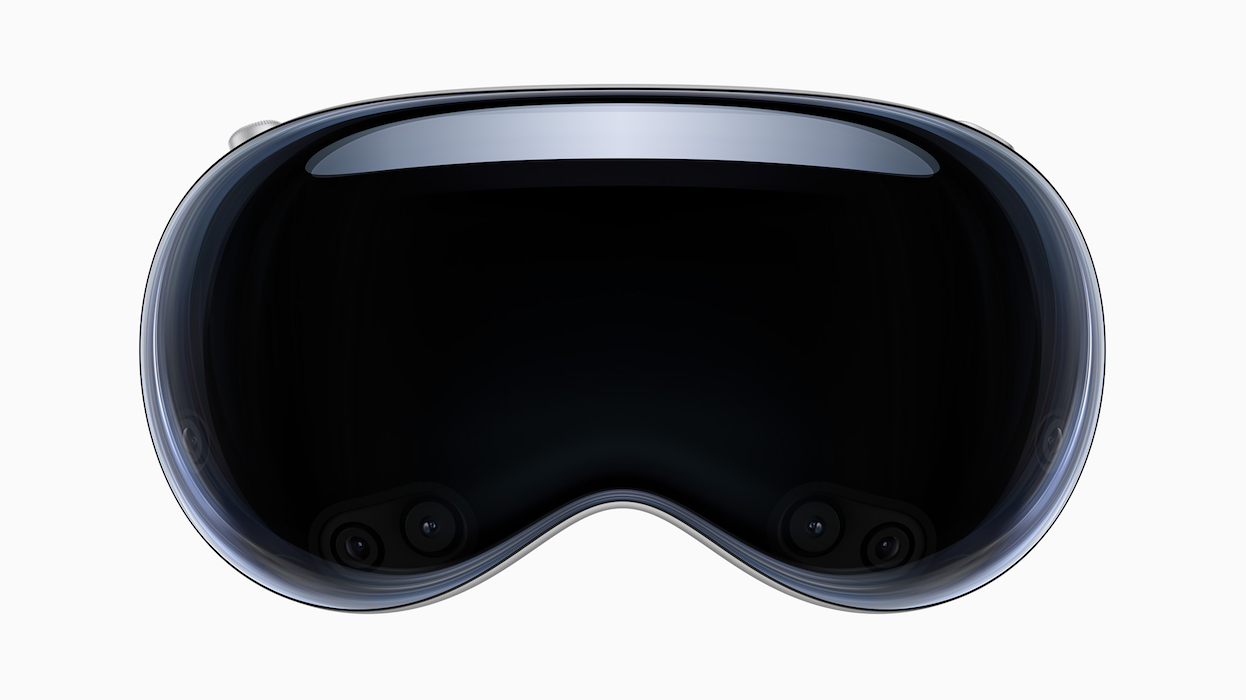
Cook handed over to Alan Dye (VP Human Interface Design) who was at pains to point out that Vision Pro had several design parameters that ensure the device operates in specific ways that are not what we have become used to (or expect). The one-piece curved glass, for example, is a display for the user so what is viewed will change, while from the outside, the user's eyes can be seen, reducing the sense of isolation.
While watching this part of the keynote, a message from a Seeking Alpha source appeared on my screen: "Vision Pro could be terrible news for Apple". This was one of a series of speculative, negative items, mainly from financial analysts, that suggest they have little idea of what they are discussing. Other headlines on Seeking Alpha included Apple: Moment of Truth (Stone Fox Capital, not well known for praising Cupertino); Apple: Ripe For Disappointment After WWDC (Bill Maurer); Apple: Vision Pro Could Be Terrible News For Apple (James Foord); Another iPad Couldn't Save Apple's Share Price (The Value Portfolio); Apple Vision Pro: High Price Tag And Questionable Stickiness (Tech Stock Pros). To be fair, Bob O'Donnell on Seeking Alpha offered, Apple Wants To Redefine Computing With Vision Pro Headset. You see the difference? Wall Street analysts are mainly negative, while Silicon Valley correspondents who have actually tried Vision Pro out are head over heels about it. Wall Street sees the price, the others see the future.
Like the Cassandras who only saw failure when the iPhone was announced, they are focused on current concepts. And the price. I had already seen the article from Ben Thompson (Stratechery) who like me had looked at other videos on this new device. He expressed a mainly positive view on the new product/platform. In a lengthy examination, he includes the comment, "What surprised me is that Apple exceeded my expectations on both counts: the hardware and experience were better than I thought possible. . ."
It also became clear during the presentation (and after) how Apple has gone all out to bring several industry giants on board in terms of technology and with software, including movies, apps and more. It is not just a gaming device - it is of course - but also for communication, collaboration, productivity and relaxation. Despite what the naysayers are already claiming, this is a paradigm shift. Apple was also careful to avoid the baggage of referring to the metaverse and instead call this Spacial Computing: the user is not creating some fantastical world inside Vision Pro, but working within an already familiar environment. During the delivery, Apple confirmed Vision Pro supports porting Unity apps and games. Apple also announced its Game Porting Kit, which make the porting process from PC to native Mac games easier (Daryl Baxter, iMore)
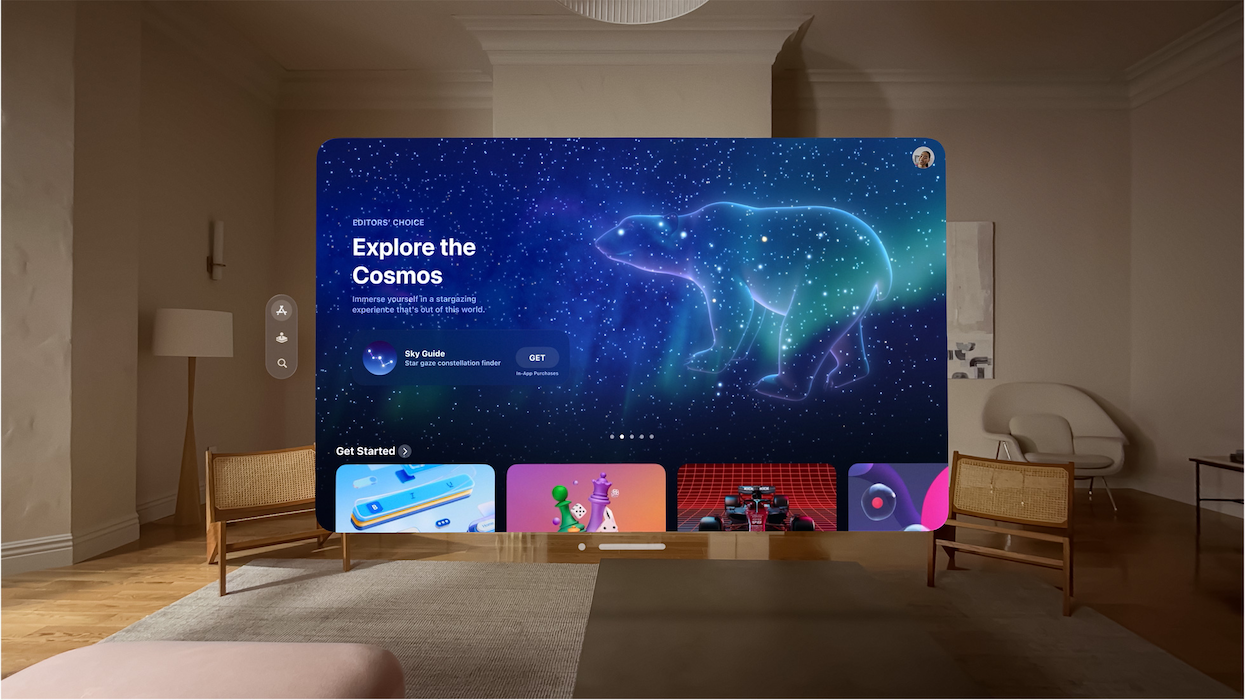
When the iPhone was announced, several industry VIPs were invited onstage to express their admiration for the product and Apple. However, it was still something of a surprise this week to see Bob Iger, Disney CEO, explain how he sees Vision Pro as a unique way "to make our vision, a reality." He has tried Vision Pro and was positive about the experience. With a preview of how this is expected to work on the headset, he announced that Disney Plus will be available on Day One. Disney seems to understand the product.
Richard Howarth described the use of the battery which is connected using a cable and which can be carried about. This has a life of 2 hours, which many commented on, but the device can also be plugged in to the power system. Mike Rockwell commented on some of the technology and described the two display panels that the user looks at. The headset is reported to use 64 pixels in the same space as 1 iPhone pixel. The panels are described as the size of a postage stamp, with a combined 23 million pixels and a lens system to give a clear view of the output: better than 4K.
For those who wear glasses, Apple has worked with Zeiss, to produce prescription lens inserts. A few of those who tried Vision Pro mentioned how the lenses provided by Apple personnel connected magnetically to the back of the lens assembly. The screen placement and Vision Pro actions are controlled by where the eyes of the user are looking. The set up process records how the specific user's eyes focus on areas and this is used during the operation, although where the eyes look (such as at a web page) is not recorded, only the button click, which is done by tapping thumb and forefinger together. John Gruber explains this in his look at the device. Others who were lucky enough to have a hands-on (heads-in?) look at the device include, Dan Barbera on MacRumors in a Juli Clover item; and Samual Axon, ArsTechnica.
Processing power comes from 2 sources: an M2 chip and a new chip called the R1. The M2 is more powerful than the iPad Pro I am working on and my two Macs each of which does a sterling job. The R1 is designed for the task of sensor processing. It handles input from 12 cameras, 5 sensors and six microphones. Again Vision Pro exceeds all three of my computers combined. As the presentation continued the displays were shown: as many as the user wants, with the panels being resizable from small to room size and more. It looks like the ability to have an infinite number of wide screen televisions in a single room. I was particularly impressed with the way meetings could be conducted using the device (see below).
A number of apps have already been optimized for Vision Pro and in this part of the keynote it began to be clear as to how more developers and industry giants are already on board. Firstly, apps:
As well as the above samples, Microsoft (Excel, Word, Teams) allows full use of the expanded canvas, and there is sharp text rendering. In addition Zoom and Cisco Webex are ready for use on the platform. Hundreds of iOS and iPad apps will be available on launch, such as Adobe Lightroom.
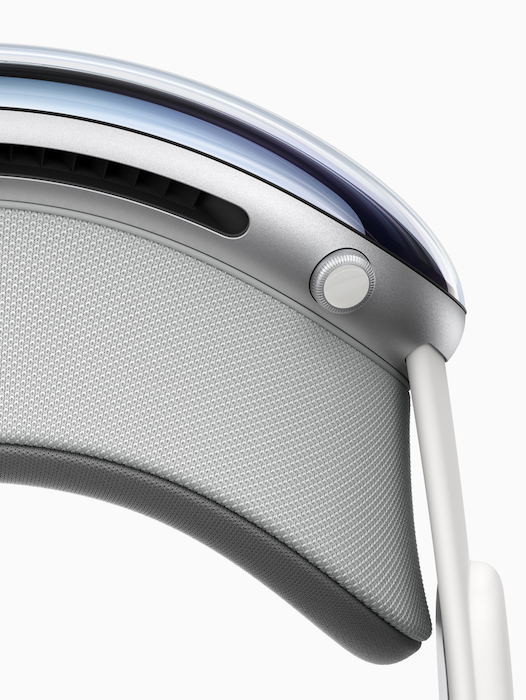
|
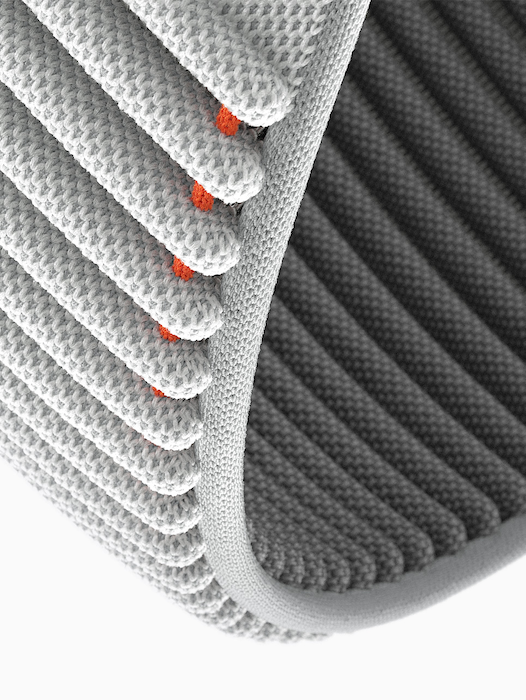
|
There was a report on Patently Apple outlining several of the patents that were used in the headset and I found this revealing (Apple claimed 5000 in the presentation). I was impressed also looking through a YouTube video on Patently Apple to see scenes from the next series of Foundation, but this was in the middle of a fairly sensible introduction to the headset. Virtual large displays, apps displayed in front of the user, with the ability to view the Photos album and create output with the camera: stills, 3D and video.
In the early part of the video, a FaceTime Meeting was shown, with other participants visible in full size face displays. I had a question about what they would see of the headset user. I could not imagine my students concentrating on a set of goggles for more than 30 seconds. The answer came with a view of a scan (at 6:40) of the user's face using the headset in a similar way to how FaceID is set up on the iPhone. That scan is used as a virtual face during such meetings, so "people see your eyes, hands and true expressions".
As more details about the device appeared I quickly went from being fairly neutral, to something between awe and desire. This will be available in the USA next year and is featured on the Apple web pages. The local Apple site does not show the device. I was wondering if this is a device (like the HomePod) that will never be available here, although it is not shown currently on the UK, French and German sites either. However, Wu and Seu Ching of Spin9, who attended WWDC do have a lengthy examination and description of the device (in Thai):
The YouTube video on Patently Apple began with the way the user could access the Mac through the headset display and see the computer screen displayed as a full size screen in the room. When I tried the Microsoft goggles in 2016 - admittedly several years ago now - I was disappointed by the display and the way it handled touch commands. The video demonstration of Vision Pro showed (as one would expect) far clearer output and better defined touch. I did remind myself that the 2007 iPhone announcement also showed a fully functioning product, but later reports suggest that the demonstration was carefully presented. However, in 2007 we were given a limited time to play about. That certainly included the scrolling and a couple of the (then) limited apps.
During the video, the construction of the headset was discussed (5:40 in the YouTube video). It is designed as a modular system so parts are interchangeable and this ensures a good fit. The screen is held in an aluminum frame, which connects to a light seal which looks as if it has a fabric exterior, while the headband is also of fabric. It also appears that the frame and headband are supported by a more flexible rubberized plastic component that contains speakers, but (without being able to see or touch this close up) it could also be aluminum, covered by such material. A report on Tuesday from Hartley Charlton (MacRumors) showed 3rd party headbands in a selection of colors showing how the modular design can work.
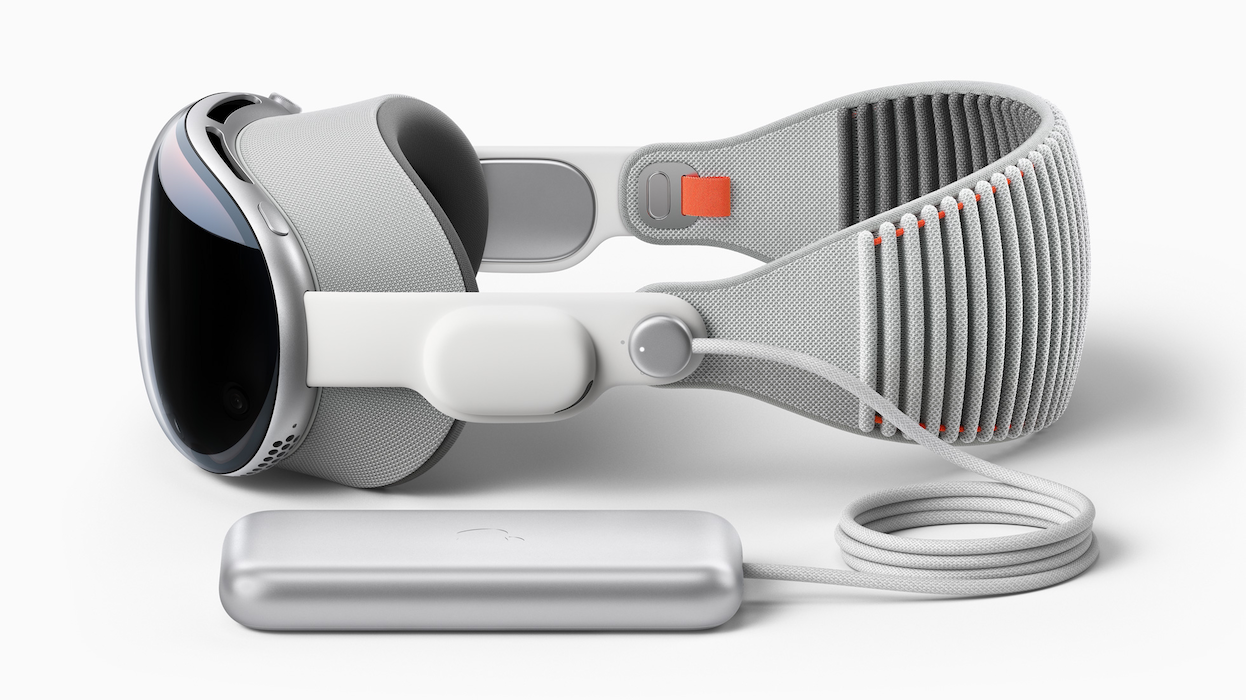
Graham K. Rogers teaches at the Faculty of Engineering, Mahidol University in Thailand. He wrote in the Bangkok Post, Database supplement on IT subjects. For the last seven years of Database he wrote a column on Apple and Macs. After 3 years writing a column in the Life supplement, he is now no longer associated with the Bangkok Post. He can be followed on Twitter (@extensions_th)

For further information, e-mail to
Back to
eXtensions
Back to
Home Page